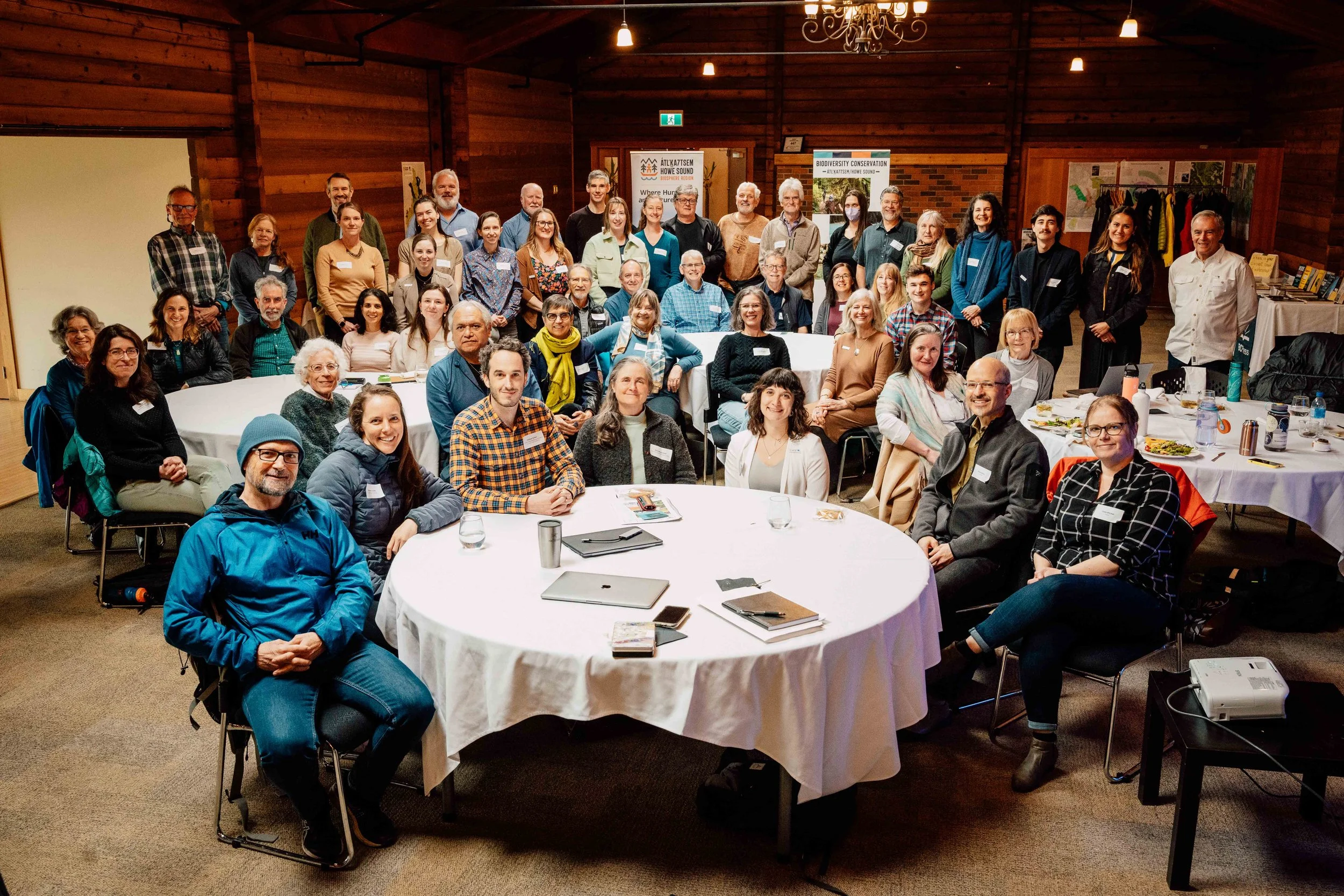Communications and Engagement:
HSBRIS’ four-year Communications Strategy will guide our organization on the use of communication tools, media, imagery and content that supports the education, information sharing and engagement of many audiences towards the objectives of this project.
Expected outcome: Through the execution of the communications strategy, we have strengthened cooperation, increased our capacity and successfully increased conservation and protections in the region. Delivery of workshops and presentations are expected to enhance understanding of OECMs and the need for conservation throughout the region.
+ 1.1 Howe Sound Roundtable
A sharing and consensus-building space, working to achieve the three priority outcomes for AHSBR. Roundtable membership constitutes a balanced representation of First Nations, all levels of government, multi-sector stakeholders, civil society and HSBRIS board. All members have a seat at the table and benefit from networking, learning, and sharing. Read the meeting summaries here. On Track
+ 1.2 Relationship Building
Establishing and maintaining relationships and partnerships with complementary organizations and bodies. On Track
+ 1.3 Strategic Communications
HSBRIS will work with our current communications team to develop a four-year communications strategy. The plan will target audiences specific to OECM and Biodiversity conservation to engage, educate and inform various audiences in the work. See OECM Communications Plan here On Track
+ 1.4 Workshops and Presentations
HSBRIS staff and partners will facilitate ongoing workshops and presentations to disseminate information on progress, gain feedback, and support for enhancing conservation. Honorariums for guest presenters and or knowledge holders that attracts key audiences will ensure successful participation by participants. See Howe Sound Conservation Network Blog In Progress
+ 1.5 Development of print and online web materials
Materials and online information disseminate more information to supports education and engagement. See Communications Toolkit here. On Track
+ 1.6 Mapping as a Community Tool
Working with collaborative partners and providing support to a PhD student to produce Species Listing Visualization tools to provide an interactive way for the community to explore our biodiversity and to become engaged through adding to our knowledge. Project shifted, but in progress
+ 1.7 Biosphere 101 Online Course
Development of the Biosphere 101 online course to educate tourism operators, businesses, and the public on regionally focused biodiversity conservation topics such as protection types and local biodiversity. On Track
+ 1.8 Creation of Biosphere 101 Video focused on Atl'katsem/Howe Sound Region
Script for the video is developed. Majority of asset acquisition for the video is completed. See videos on our YouTube channel here. Completed
Key Results and Measures:
Overall at the end of this project we will have a strong following through our strategic and effective communications resulting in meaningful and impactful collaborative partnerships, that coordinate work within the region are formed and maintained throughout the project duration to achieve all desired outcomes of the project.
1.1 Key stakeholders and First Nations invited to participate in the Roundtables are advising and contributing through their organizations towards the priority projects described in the Biosphere Region Management Plan.
1.2 Collaborative relationship and trust-building through transparent dialogue, and informative updates. Monthly hybrid meetings will be held between HSBRIS Project Director and the partnering project lead committee members responsible for each of the projects to discuss: progress on action items, new information and data, and reset of priorities. Quarterly hybrid gatherings/meetings will be held with managing authorities to provide and exchange updates on the progress of the projects and seek answers to key decisions. Regular meetings ensure consistency and commitment throughout the project timeline.
1.3 The target audiences are more engaged and informed leading to enhanced biodiversity conservation.
1.4 Increased understanding, improved management practices, agreement and support
1.5 Materials and online information disseminate more information to support education and engagement.
1.6 Increased understanding by many audiences of species at risk in the region and the importance of protecting habitat in planning

